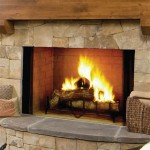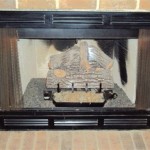How To Baby Proof Your Fireplace
A fireplace, while adding warmth and ambiance to a home, presents a significant safety hazard for babies and toddlers. Young children are naturally curious and drawn to explore their environment, making the attractive appearance of a fireplace – with its intriguing textures and potentially bright flames – irresistible. Effective babyproofing of a fireplace requires a multi-faceted approach, addressing the various dangers it poses: burns from a hot surface, impact injuries from falling against it, ingestion of small parts, and potential access to the fire itself. This article will detail various strategies and products available to create a safer environment for young children around fireplaces.
Assessing the Risks: Identifying Potential Hazards
Before implementing any safety measures, it is crucial to meticulously assess the specific risks presented by the fireplace and its surrounding area. This assessment should consider the fireplace's design, materials, and functionality. A raised hearth, for example, presents a significant fall hazard, while a working fireplace with an unprotected opening poses a burn risk. The type of fuel used in the fireplace – wood, gas, or electric – also impacts the necessary safety precautions.
The immediate surrounding area of the fireplace should also be evaluated. Are there sharp edges or corners that need to be padded? Are there decorative objects within reach that could be pulled down or ingested? The goal is to identify every potential danger point, considering the child's developmental stage and likely behaviors. An infant who is just beginning to crawl will have different risks than a toddler who is walking and climbing. Therefore, the approach should be tailored to the child's specific capabilities and tendencies.
Furthermore, consider the structural integrity of the fireplace itself. Are any bricks or stones loose? Is the mantel securely attached? Addressing these structural issues is paramount to preventing accidents. Regular maintenance, including cleaning the chimney and inspecting gas lines, is an essential part of ensuring the fireplace is safe for everyone in the household.
Implementing Physical Barriers: Establishing Safe Boundaries
One of the most effective methods of babyproofing a fireplace is to create a physical barrier that restricts access. This can be achieved through various means, including the use of safety gates, hearth pads, and custom-built enclosures. The choice of barrier depends on factors such as the fireplace's design, the available space, and the desired level of protection.
Safety gates are a versatile option, particularly for fireplaces that are flush with the wall. Look for gates specifically designed for fireplaces, as these are often taller and more robust than standard baby gates. These gates should be securely anchored to the wall, using mounting hardware, to prevent them from being pushed over. The gate should also be installed at a distance from the fireplace sufficient to prevent the child from reaching the hot surface. Ensure the gate latch is childproof and easily operated by adults.
Hearth pads are designed to cushion the impact of falls against the hard surface of the hearth. These pads are typically made of foam or other shock-absorbing materials and can be custom-cut to fit the specific dimensions of the hearth. While hearth pads offer protection from impact injuries, they do not prevent access to the fireplace itself. Therefore, they are best used in conjunction with other safety measures, such as a safety gate.
For a more comprehensive solution, consider a custom-built enclosure. This option involves constructing a barrier around the entire fireplace, effectively creating a dedicated safe zone. These enclosures can be made from wood, metal, or other sturdy materials and can be designed to complement the existing decor. When constructing a custom enclosure, ensure it is securely attached to the wall and that it provides adequate ventilation to prevent overheating. This option is often the most aesthetically pleasing while offering the highest level of safety.
Addressing Specific Fireplace Types and Features
The babyproofing approach will vary depending on the type of fireplace. Wood-burning, gas, and electric fireplaces each present unique safety concerns that require specific solutions. Understanding these differences is crucial for implementing effective safety measures.
Wood-burning fireplaces present the risk of burns from hot surfaces, embers, and smoke inhalation. In addition to a physical barrier, consider installing a fireplace screen to contain sparks and embers. The screen should be made of sturdy metal and securely attached to the fireplace. Never leave a wood-burning fireplace unattended while it is in use, and ensure that the fire is completely extinguished before leaving the room or going to bed. Store firewood in a safe location away from the fireplace and out of reach of children.
Gas fireplaces, while generally cleaner than wood-burning fireplaces, also pose a burn risk. The glass front of a gas fireplace can become extremely hot during operation and remain hot for a considerable period after it is turned off. A physical barrier is essential to prevent children from touching the hot glass. Some gas fireplaces also have decorative elements, such as artificial logs or stones, which could be choking hazards. These elements should be removed or secured to prevent children from accessing them.
Electric fireplaces, while not producing an open flame, can still generate heat. The surface of an electric fireplace can become hot enough to cause burns, particularly on models with heating elements exposed. A physical barrier is still recommended, even for electric fireplaces. Additionally, ensure that the electric cord is securely plugged in and out of reach of children to prevent electrical shock hazards. Periodically inspect the cord for any signs of damage.
Beyond Barriers: Implementing Additional Safety Measures
In addition to physical barriers, several other safety measures can be implemented to further reduce the risk of accidents around the fireplace. These measures include covering sharp edges, securing loose objects, and teaching children about fireplace safety.
Use edge protectors to cover any sharp edges or corners on the fireplace or the surrounding area. These protectors are typically made of soft, impact-absorbing materials and can be easily attached using adhesive. Pay particular attention to the hearth, which often has sharp edges that pose a significant fall hazard.
Remove or secure any loose objects that could be pulled down or ingested by children. This includes decorative items on the mantel, tools used for tending the fire, and any flammable materials such as newspapers or kindling. Store these items in a safe location out of reach of children.
Educating children about fireplace safety is an important part of preventing accidents. Explain to them in simple terms that the fireplace is hot and dangerous and that they should never touch it. Teach them to stay a safe distance from the fireplace and to inform an adult if they see anything unsafe. Consistent reinforcement of these safety rules is crucial for ensuring that children understand and respect the dangers of the fireplace.
Consider installing a smoke detector and carbon monoxide detector in the vicinity of the fireplace. These detectors can provide early warning of potential hazards, such as a fire or a carbon monoxide leak. Test the detectors regularly to ensure they are functioning properly.
Regularly inspect the fireplace and the surrounding area for any potential hazards. Look for loose bricks, damaged screens, or other issues that could compromise safety. Promptly address any problems you identify to prevent accidents.
Finally, remember that babyproofing is an ongoing process. As children grow and develop, their abilities and behaviors will change, requiring adjustments to the safety measures in place. Periodically reassess the effectiveness of the safety measures and make any necessary changes to ensure that the fireplace remains a safe environment for young children.

How To Baby Proof A Fireplace Diy Hearth Cushion Simply September

How To Baby Proof A Fireplace Diy Hearth Cushion Simply September

Diy Baby Proofing Your Brick Fireplace Thisaveragemom

3 Ways To Baby Proof A Fireplace Wikihow

How To Baby Proof Fireplace Important Checklist

3 Ways To Baby Proof A Fireplace Wikihow

3 Ways To Baby Proof A Fireplace Wikihow

How To Baby Proof Your Fireplace Reviewed

How To Baby Proof Your Fireplace Pa Guide Proofing Home Safety

Diy Fireplace Hearth Idea For Child Proofing








